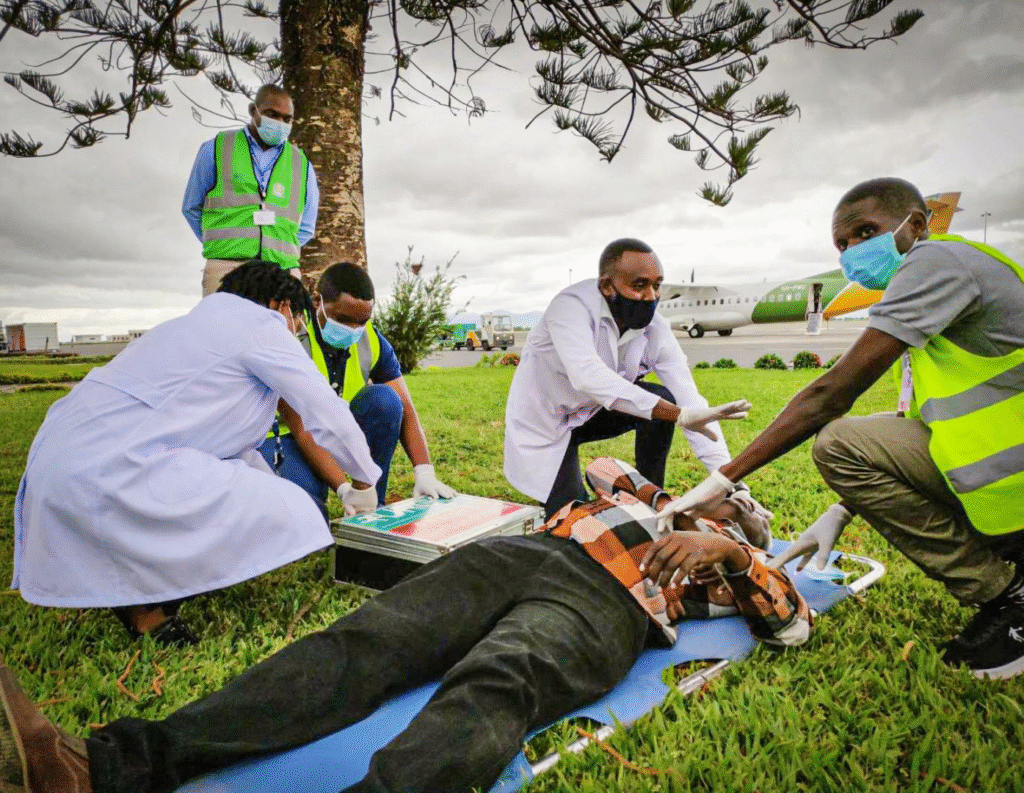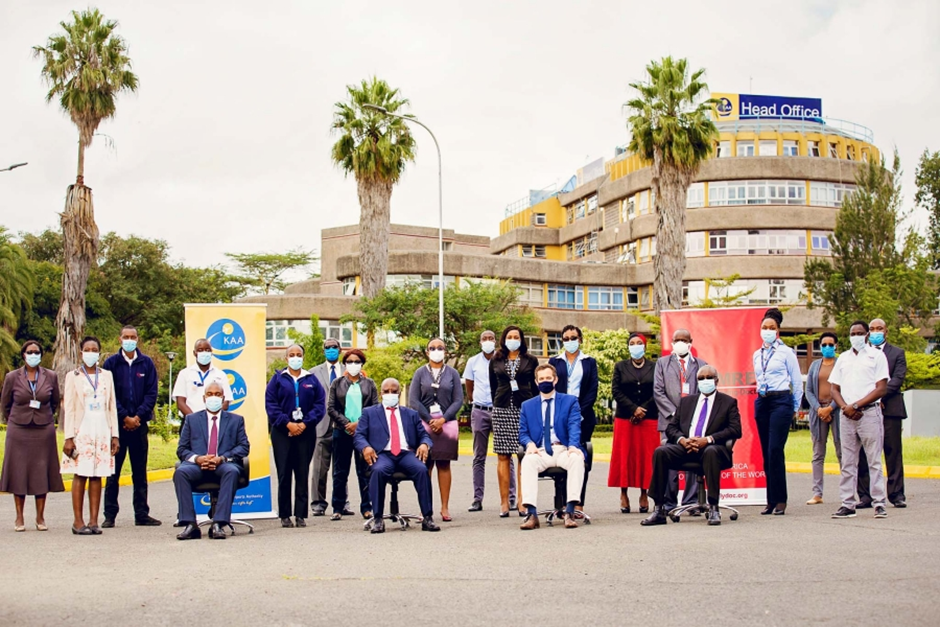
Introduction
The COVID-19 pandemic highlighted the vital link between aviation and public health. Airports, as major gateways for international travel, are critical points of entry for pathogens and other biosecurity risks. In East Africa, the pandemic served as a wake-up call, accelerating reforms to public health protocols at major airports across the region. This article explores how East African nations have integrated public health and biosecurity measures into airport safety frameworks and examines the long-term implications of these changes for the region’s aviation security landscape.
The Intersection of Aviation and Health Security
Air travel connects East Africa to the world, but it also exposes the region to global health threats. Airports in Kenya, Uganda, Ethiopia, and Rwanda, among others, faced immense pressure to adapt during COVID-19. Measures such as thermal scanning, health declaration forms, mask mandates, and sanitization became standard practices almost overnight.
Health threats like Ebola, Marburg virus, and even antimicrobial-resistant pathogens are of particular concern in East Africa. As a result, airport health security has evolved from a secondary concern to a central pillar of aviation safety. Today, managing public health risks is not just about responding to pandemics—it is about building a long-term framework for biosecurity preparedness.

Screening and Surveillance at Airports
One of the most visible shifts in East African airport operations since 2020 has been the adoption of advanced health screening systems. Thermal imaging cameras and automated temperature scanners were deployed at key entry points such as Jomo Kenyatta International Airport (JKIA) in Nairobi, Entebbe International Airport in Uganda, and Addis Ababa Bole International Airport in Ethiopia.
In Rwanda, Kigali International Airport established a robust passenger health tracking system using digital tools to streamline contact tracing and health status verification. These systems integrate with national health databases and help authorities detect and isolate potential health threats in real time.
The Port Health Services departments under national Ministries of Health have been strengthened at major airports to ensure there are trained health officers on site. These professionals are tasked with inspecting inbound flights, overseeing health screenings, and coordinating with airport security and immigration personnel in case of a suspected outbreak.
Integration of Technology and Data Sharing
Technology plays a key role in enhancing biosecurity at airports. Digital health passports, biometric identification, and integrated surveillance tools have been adopted across parts of East Africa to streamline health checks while minimizing congestion at terminals.
For example, Ethiopia has tested mobile platforms that allow travelers to upload proof of vaccination or COVID-19 test results before arrival. Kenya, too, partnered with the African Union’s Trusted Travel initiative, which verifies the authenticity of COVID-19 test results through a centralized system.
While these technologies improve efficiency, they also raise concerns about privacy, data protection, and access. Not all travelers have access to smartphones or internet connections, which can result in inequities in compliance or delays in processing.
Airport Infrastructure and Sanitation Upgrades
Airports across the region have had to modify their infrastructure to meet health safety standards. Physical distancing signage, sanitizing stations, touchless check-in kiosks, and air filtration systems have been introduced in high-traffic areas.
Kenya Airports Authority and Uganda Civil Aviation Authority have implemented rigorous cleaning protocols for public spaces, aircraft cabins, and baggage handling zones. Some airports have expanded quarantine areas and created isolation rooms near arrival terminals for passengers showing signs of illness.
Ethiopia’s Bole International Airport added a 24-hour COVID-19 testing and response center, setting a precedent for other East African nations to follow. These enhancements not only serve current health emergencies but also build long-term resilience for future public health events.
Training and Coordination Between Stakeholders
Effective biosecurity requires coordination between aviation authorities, health ministries, airlines, and border control agencies. East African states have begun developing joint task forces that oversee airport health measures and respond to emerging risks.
Regular drills and training exercises are conducted for airport staff to handle suspected infectious disease cases, manage PPE usage, and enforce protocols. The World Health Organization (WHO) and ICAO have provided training programs and technical guidance to regional aviation stakeholders.
For example, Rwanda’s collaboration with ICAO and Africa CDC helped build capacity for health-related aviation protocols and increased regional harmonization of standards. Meanwhile, Uganda participated in multi-agency tabletop exercises focused on managing cross-border biosecurity threats.
Challenges in Implementation
Despite progress, East African airports continue to face significant challenges in fully integrating biosecurity into airport operations. Funding limitations, shortages of trained health personnel, inconsistent enforcement of regulations, and inadequate infrastructure remain key obstacles.
Smaller airports and border airstrips, particularly in South Sudan and Burundi, often lack the resources to install advanced screening equipment or isolate suspected cases. Variability in national regulations also leads to inconsistent experiences for travelers crossing regional borders.
There is also a need to strike a balance between ensuring public health and maintaining efficient passenger flow. Lengthy health checks or unclear documentation requirements can lead to flight delays, traveler frustration, and economic losses for airlines and airport operators.
Future Outlook
The lessons from the pandemic have reshaped East Africa’s approach to airport health security. The region is gradually adopting the “One Health” model, which emphasizes the interconnectedness of human, animal, and environmental health. Airports are key nodes in this model, given their role in facilitating rapid cross-border movement.
Moving forward, public health preparedness will remain an integral part of aviation safety audits and certifications. More investment is expected in laboratory facilities, mobile health units, and real-time disease surveillance systems at major airports.
Moreover, regional cooperation is likely to deepen. Harmonizing entry requirements, sharing epidemiological data, and developing mutual recognition of health documentation can boost efficiency and trust in East Africa’s aviation system.
Conclusion
Public health and biosecurity have emerged as critical elements of airport safety in East Africa. From disease screening technologies to infrastructure upgrades and coordinated training, the region has made significant strides since the outbreak of COVID-19. However, challenges remain—particularly in harmonizing efforts, sustaining funding, and expanding capacity at smaller airports. As East Africa continues to integrate public health into aviation security frameworks, the region is better positioned to face future health threats with greater coordination, preparedness, and resilience.


